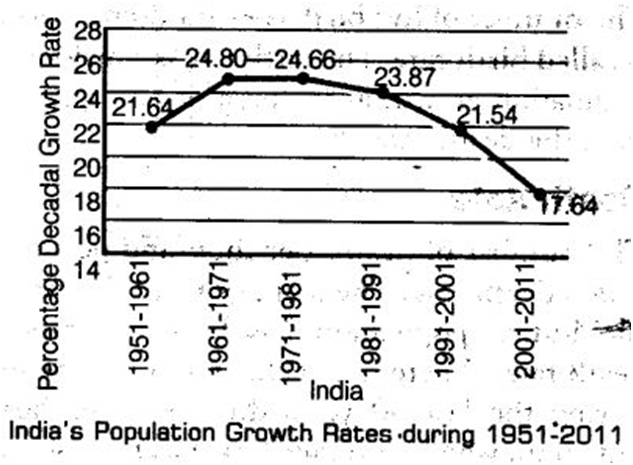- Books Name
- Learn with me Social Science Book
- Publication
- Learn with me publication
- Course
- CBSE Class 9
- Subject
- Social Science
Population Growth and Processes of Population Change
Due to births, deaths and migrations the number, distribution and composition of population change continuously.
Population Growth
The change in the number of people of a country or state during a specific period of time is called growth of population. Usually, it is mostly calculated at the interval of 10 years. The change can be expressed either in terms of absolute numbers or in terms of annual growth rate.
Absolute Increase of Population It means the absolute numbers added each year or in each decade in the population. It is obtained by simply subtracting the earlier population (e.g., that of 1991) from the later population (e.g., that of 2001).
Annual Growth Rate of Population The rate at which the number of individuals in a population increase in 1 year as a fraction of the initial population; is called annual growth rate of population. It is expressed in terms of per cent per annum. For example, a rate of increase of 2% per annum means that there was an increase of 2 persons for every 100 persons in the initial population.

Population Growth Rate Since Independence
India’s annual growth rate of population increased steadily till 1981. Since then, the annual rate of population growth started declining. Still the population growth of India in 1990s was 182 million (in terms of number). This addition of people was larger than ever before. In spite of decreasing annual growth rate (in percent), the largest addition in people (in terms of number) is due to the large population of the country.

 Learn with me publication
Learn with me publication
